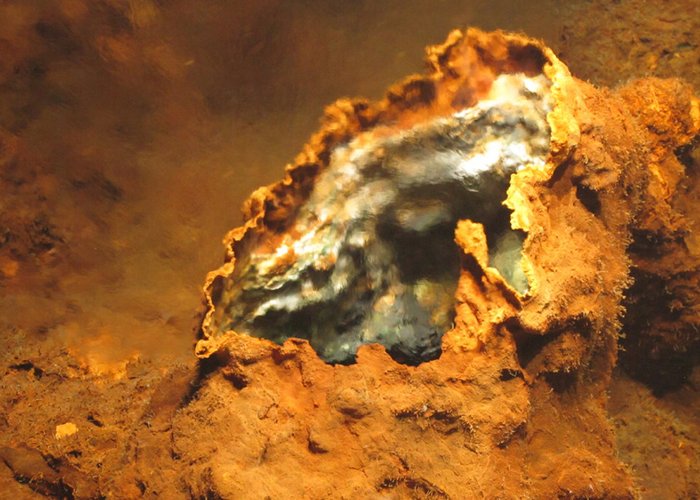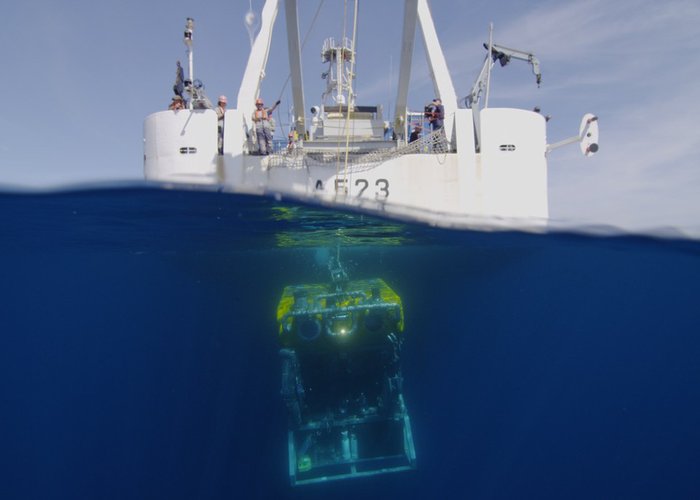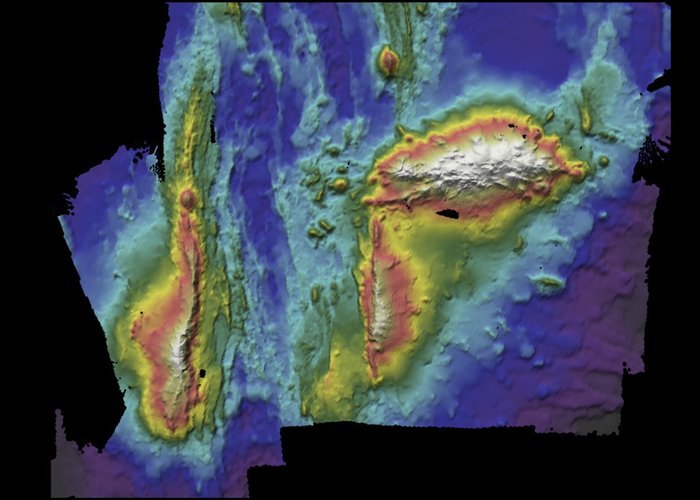Blue Ocean Expedition discovers new hydrothermal field in the Azores
Located at a depth of 570 meters, on the Gigante submarine hill, 60 miles from Faial Island, this new hydrothermal field is an area of high biological and mineral richness.
It is the first time that an expedition organized by a Portuguese institution, led by Portuguese scientists and using national vessels and means locates a hydrothermal field in deep waters in our maritime territory.
The expedition is organized by the Oceano Azul Foundation in partnership with the Waitt Foundation and National Geographic Pristine Seas, and in collaboration with the Portuguese Navy through the Hydrographic Institute, the Regional Government of the Azores and the Mission Structure for the Extension of the Continental Shelf (EMEPC) with the ROV "LUSO". This is one of the most complete expeditions in national waters, and aims to explore areas still little known in the Azores to promote marine conservation under the Blue Azores program.
This expedition includes scientists from several national research centers, such as IMAR, MARE, CCMAR, CIBIO and the University of the Azores, and international universities at the University of Hawaii, the University of California at Santa Barbara, the University of Western Australia, and the CSIC, IEO and Museum of the Sea of Ceuta in Spain.
On board the "NRP Almirante Gago Coutinho" vessel, committed to the mission of the Portuguese Sea Mapping Project of the Hydrographic Institute, the scientific team dedicated to the study of deep sea ecosystems discovered, through dives with the "LUSO" ROV of EMEPC, a new hydrothermal field.
According to Emanuel Gonçalves, leader of the Blue Ocean Expedition and Administrator of the Oceano Azul Foundation, "this is an extraordinary discovery because this hydrothermal field lies at a lower depth than others known in the Mid-Atlantic Rift and only 60 miles from the island of Faial , which for the scientific community represents a unique, more accessible opportunity to know better these ecosystems of which we still know very little. This discovery reinforces the unique role of the Azores as a natural laboratory for the study of the ocean.".
Telmo Morato, coordinator of the Oceano Azul expedition team dedicated to deep-sea ecosystems and a researcher at IMAR and the University of the Azores, said that "hydrothermal fields are areas where hot volcanic fluids often emerge rich in minerals that create conditions for the development of a unique ecosystem that does not depend on sunlight. The now discovered hydrothermal field consists of multiple chimneys of different heights. Hydrothermal fluids are transparent, slightly warmer than the exterior and rich in carbon dioxide. Evidence was found of the existence of bacteria associated with this hydrothermal field. This discovery of the Blue Ocean expedition shows that there is still much to discover in the Portuguese Sea, the Azores being a unique region for the study of the deep sea."
Most of the hydrothermal fields are located in border areas of divergent tectonic plates, as is the case of the Middle Atlantic Ridge that separates the western group from the central group of the Azores Archipelago, precisely where the Giant Submarine Hill is located. They are areas of high biological and mineral richness, true oases hidden deep in the ocean, which are usually found kilometers deep and hundreds of miles from coastal areas.
Currently, eight deep hydrothermal fields are known in the Portuguese Sea off the Azores: "Lucky Strike" (the first to be discovered in 1992), "Menez Gwen", "Rainbow", "Saldanha", "Ewan", "Bubbylon "," Seapress "and" Moytirra. "The scientific studies carried out in them, in which the IMAR and the University of the Azores scientists have played an important role over the years, represent important contributions to the knowledge of these ecosystems and mineral resources associated with them.
About the Blue Azores program:
With an estimated duration of three years, this partnership between the Blue Ocean Foundation and the Waitt Foundation aims to promote, protect and enhance the Azores' natural blue capital, in close collaboration with the Regional Government of the Azores and other entities . The program involves many of the activities of the Blue Ocean Foundation: science, conservation, assessment of the economic value of ecosystems, fisheries literacy and co-management.
About the Blue Ocean Foundation:
Its genesis results from the conviction that in times of profound change, it is necessary to change behaviors that allow the coexistence of human development with the protection of the ocean. The Foundation was born, in 2017, with a desire to bring Portugal closer to the sea and to help the country develop a blue generation and position itself as a leader in ocean issues.
The Blue Ocean Foundation focuses on Literacy, Conservation and Empowerment, under the motto "from the ocean's point of view".
The Blue Ocean expedition is a partnership between:
- Fundação Oceano Azul
- Waitt Foundation
- National Geographic Pristine Seas
It counts with the collaboration of:
- Governo Regional dos Açores
- Instituto Hidrográfico
- Estrutura de Missão para a Extensão da Plataforma Continental
And with the following participants:
- Universidade dos Açores
- IMAR
- MARE
- CIBIO
- CCMAR - Centro de Ciências do Mar
- UWA – The University of Western Australia
- University of Hawai’í
- UCSB – University of California, Santa Barbara
- IEO – Instituto Español de Oceanografia
- CEAB - Centre d'Estudis Avançats de Blanes
- Museo del Mar Ceuta









